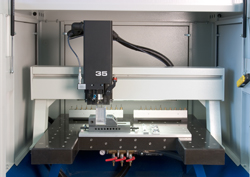Automated moulding process expands product range
In rotomoulding, polymer powder or resin is placed in a hollow mould cavity and heated while rotating biaxially to coat the inside of the mould. Rotation is rather slow and coating is not through centrifugal forces. The mould is then cooled and opened and the product removed. Timing is critical. Too much time in the oven means degradation of the materials and too little means inconsistent melting and coalescence. Rapid cooling can cause the polymer to shrink and warp. Currently, the process almost exclusively employs polyethylene (PE) due to incompatibility with the rheological characteristics of other polymers and resins. Rotomoulding of PE is used to make products ranging from toys and containers to car parts and tanks and the EU is a world leader in the field. Despite its widespread use, rotomoulding is relatively undeveloped compared to injection moulding or blow moulding. The EU-funded project ROTOFLEX(opens in new window) was designed to advance rotomoulding technology and open the door to new markets. This would further enhance the international competitive position of EU small and medium-sized enterprises (SMEs). ROTOFLEX scientists developed knowledge-based machine design and process optimisation guidelines to reinforce the supply chain. Process simulation software (RotoSim) quantifies parameters affecting behaviours such as shrinkage, residual stress and warpage. Based on a deeper understanding of equipment and process control, researchers have brought the process up to speed, so to speak. Retrofittable automated material feeding for polymers, additives and coolants enables input at any point during the process cycle. Automation not only facilitates a significant decrease in production time and energy consumption, but the precise control opens the door to a wealth of new components. Rotomoulders can now use novel materials to manufacture composite parts, including fibre-reinforced and wood–polymer composite (WPC) components, and multi-layer and other value-added products. Project outcomes should positively impact the competitiveness of European SMEs in the rotomoulding sector with better control over processing and less material degradation of conventional PE components. Manufacturers can now use novel materials to create added-value parts particularly for the automotive and aerospace sectors.







